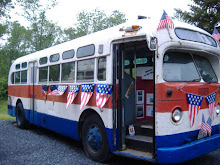 HAPPY ST. PATRICK'S DAY!
HAPPY ST. PATRICK'S DAY!Fareboxes - The first farebox was invented by Tom Loftin Johnson in 1880 and was used on streetcars built by the St. Louis Streetcar Co. Early models would catch coins and then sort them once the fare was accepted or "rung up". The first practical mechanical registering farebox, developed around 1905 by the Johnson Farebox Company of Chicago, was for cable cars, trams and trolleys--with buses coming on the scene much later. These first registering fareboxes counted the money and gave the coins back to the driver or conductor to make change. The locked cashbox concept, introduced by the Cleveland Farebox Company, did not register the money but simply retained it under lock and key. These companies defined fare collection during the early part of the twentieth century and were merged during the mid 1930s with Johnson as the surviving company. Later models after World Ware II had a counting function that would allow the fares to be added together so that a total per shift could be maintained by the transit revenue department.
The Bus Museum has two fare boxes on the floor–the one closer to the older buses on the floor (and the park bench) is used for the general fund. The second fare box on the other end of the exhibit is used for a specific fund: to repaint the Johnstown Traction Company Bus back into its original colors. More on this subject tomorrow.

No comments:
Post a Comment